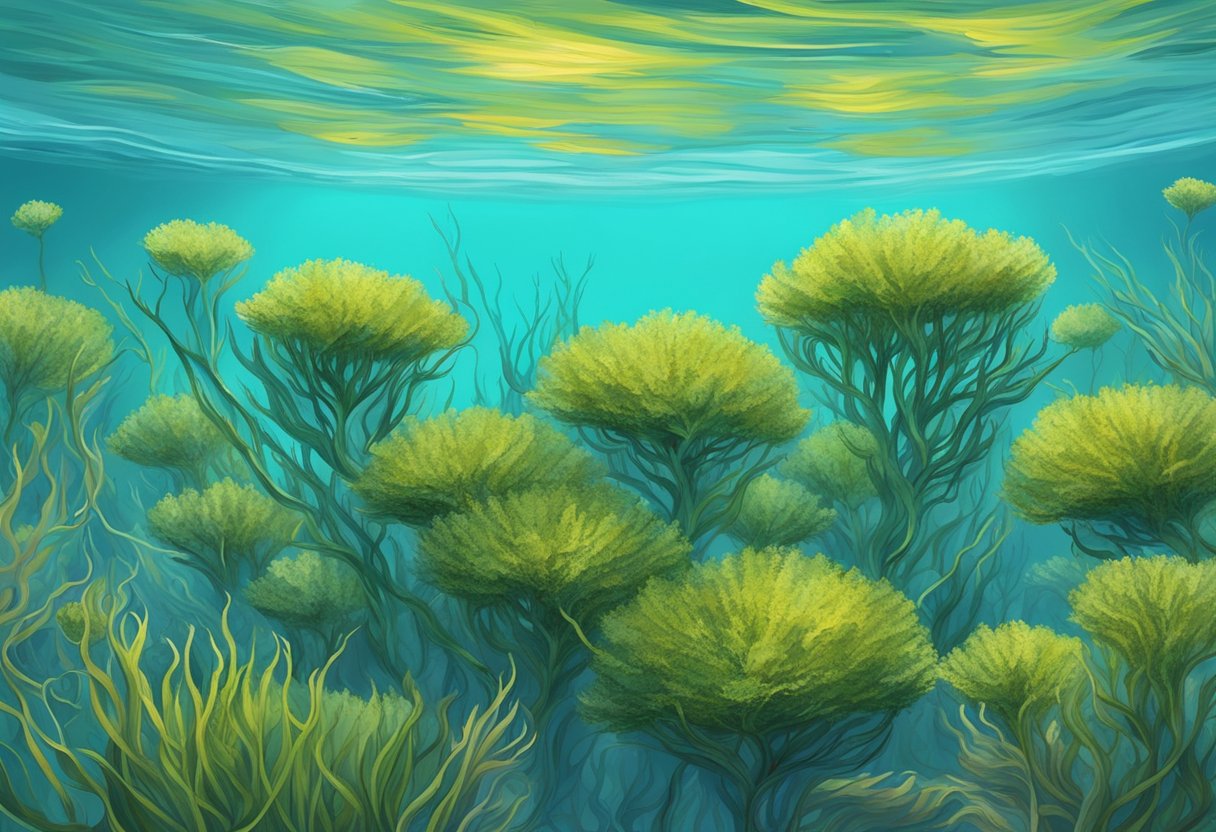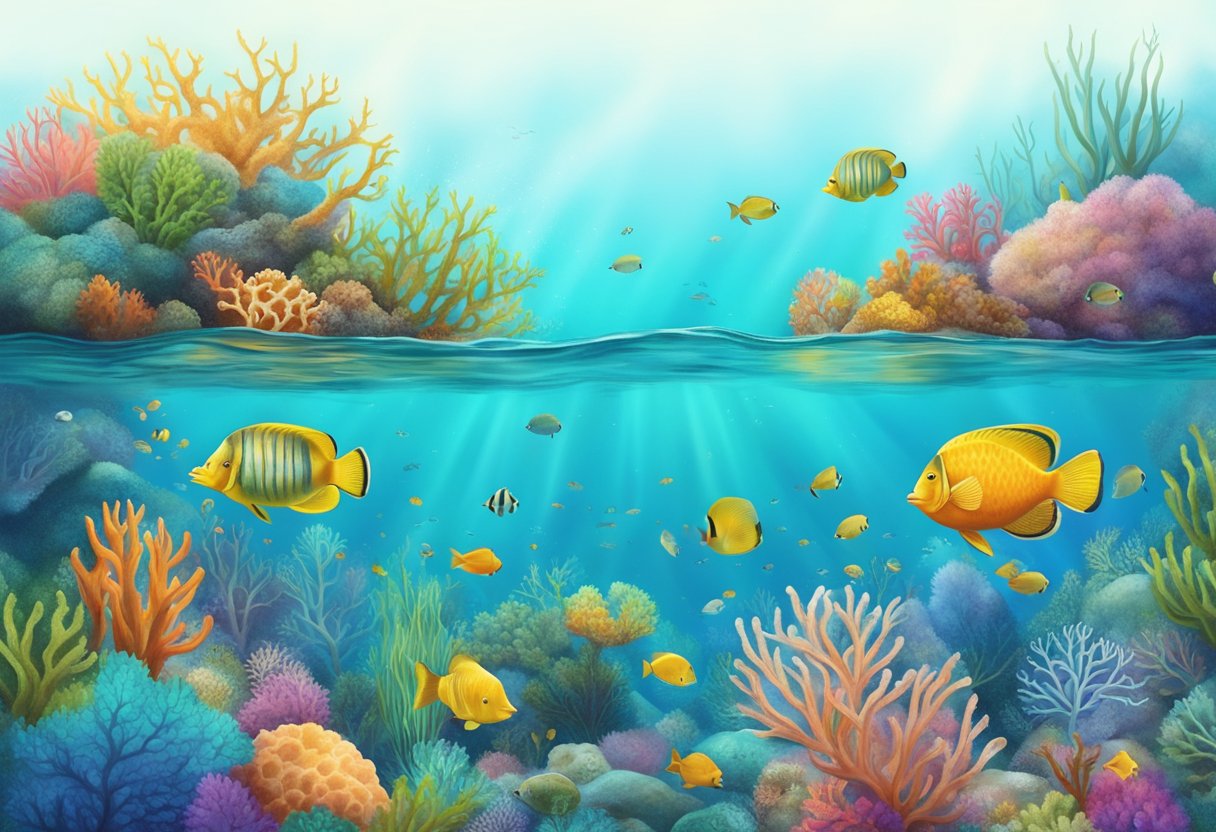Sea moss, which is often found in health food stores and touted for its potential benefits, is commonly mistaken as a plant. However, it is not a plant by the botanical definition. Botanically speaking, sea moss is a type of red algae or seaweed known scientifically as Chondrus crispus. It thrives in the cool waters of the Atlantic coasts of Europe and North America. Despite its plant-like appearance, sea moss lacks the complex structures that characterize land plants, such as true roots, leaves, or flowers.

Another aspect that distinguishes sea moss from true plants is its role in marine ecosystems and its method of obtaining nutrients. Unlike plants that typically absorb nutrients through root systems and perform photosynthesis with leaves, sea moss absorbs nutrients directly from the water through its entire surface and has a different photosynthetic process that doesn't rely on chlorophyll the same way that land plants do. Moreover, examining its role in natural habitats reveals the sustainable practices needed to harvest sea moss without harming the environment, which is a growing area of concern.
Key Takeaways
- Sea moss is a type of red algae, not a plant, lacking land plants' typical structures like true roots and leaves.
- It absorbs nutrients directly from the water and has a different photosynthesis process compared to land plants.
- Sustainable harvesting methods are important for maintaining the environmental balance and ensuring the continued availability of sea moss.
Classification and Biology

Sea moss, commonly referred to as Irish moss, is scientifically acknowledged as a marine plant belonging to the Phylum Rhodophyta.
Sea Moss Taxonomy
Kingdom: Plantae
Phylum: Rhodophyta
Class: Florideophyceae
Order: Gigartinales
Family: Cystocloniaceae
Genus: Chondrus
Species: Chondrus crispus
The taxonomic classification places sea moss firmly within the Plant Kingdom, under the red algae category.
Plant Characteristics
Sea moss, despite being a marine species, shares several core characteristics with terrestrial plants. It possesses chlorophyll and conducts photosynthesis, using sunlight to convert carbon dioxide and water into glucose and oxygen. Sea moss has a body structure known as thallus, similar to leaves, which is typically flattened and often branched, absorbing nutrients directly from the water. Reproduction in sea moss is complex, involving both sexual and asexual methods, paralleling many plant reproductive strategies.
In conclusion, sea moss is unequivocally a plant, specifically a type of red algae, and exhibits key plant-like features in both its biology and life cycle.
Nutritional Profile and Health Benefits

Sea moss is lauded for its dense nutrient composition and potential health benefits.
Nutritional Content
Sea moss is rich in essential nutrients. It contains significant amounts of:
- Vitamins: Such as Vitamin A, Vitamin C, and a host of B vitamins
- Minerals: Including iodine, potassium, calcium, and magnesium
- Fiber: Soluble fiber, like carrageenan, which aids in digestion
- Proteins: Composed of various amino acids necessary for bodily functions
The nutritional content per 100 grams of sea moss is roughly:
| Nutrient | Amount |
|---|---|
| Calories | 49 kcal |
| Carbohydrates | 12.29 g |
| Fiber | 1.3 g |
| Protein | 1.51 g |
| Fats | 0.16 g |
| Vitamins & Minerals | Present in varying amounts |
Health Advantages
Sea moss may be beneficial for health due to its nutrient density. Its key advantages include:
- Thyroid Support: Iodine in sea moss is crucial for thyroid function, which regulates metabolism.
- Immune Boosting: Vitamin C and other antioxidants help support the immune system.
- Digestive Health: The soluble fiber in sea moss can promote a healthy gut microbiome.
- Skin Health: Nutrients like Vitamin A and sulfur may improve skin health by nourishing the skin.
Researchers are studying these benefits further to understand their impact on human health.
Cultivation and Harvesting difference between plant and sea moss
Sea moss, unlike terrestrial plants, thrives in marine environments and their cultivation methods and harvesting techniques differ significantly.
Growing Conditions
Land Plants:
- Soil: Require nutrient-rich soil.
- Light: Need sunlight for photosynthesis.
- Water: Depend on regular watering schedules.
Sea Moss:
- Substrate: Grows attached to rocks and other substrates in the ocean.
- Light: Utilizes filtered sunlight penetrating the water.
- Water: Constantly submerged in mineral-rich seawater.
Harvesting Methods
Land Plants:
- Manual: Hand-picking fruits, vegetables, or leaves.
- Mechanical: Use of machinery for large-scale harvesting.
Sea Moss:
- Manual: Divers or farmers manually detach sea moss from substrates.
- Sustainability Considerations: Harvesting involves leaving enough sea moss to ensure regrowth and minimal ecological impact.
Environmental Impact and Sustainability
Sea moss significantly affects marine environments and coastal ecosystems. Its cultivation and harvesting must balance ecological health with the demands of the market.
Ecosystem Roles
Sea moss plays a crucial role in its natural habitat. It serves as a shelter and food source for a variety of marine organisms, contributing to biodiversity. Disturbance in sea moss populations can impact fish stocks and other marine life.
- Food Source: Small marine creatures consume sea moss.
- Habitat: Provides hiding spots and breeding grounds.
- Water Quality: Helps to filter and maintain clear ocean waters.
Sustainability Practices
Sustainable harvesting practices are vital in ensuring the long-term viability of sea moss populations. These practices can involve:
- Regulated Harvesting: Setting quotas to prevent overharvesting.
- Farming Techniques: Employing methods such as rope cultivation to grow sea moss without depleting wild stocks.
| Method | Benefit |
|---|---|
| Rope Cultivation | Reduces impact on wild populations and supports regrowth. |
| Quota Systems |
Manages harvest amounts to allow ecological recovery. |
Frequently Asked Questions
In this section, readers will find reliable answers to common queries regarding the nature of sea moss.
Is sea moss a plant or animal?
Sea moss, scientifically known as Chondrus crispus, is a type of red algae, which classifies it as a plant. It is commonly found along the rocky parts of the Atlantic coast of Europe and North America. Despite its name, sea moss is not a true moss but belongs in the algae family.




